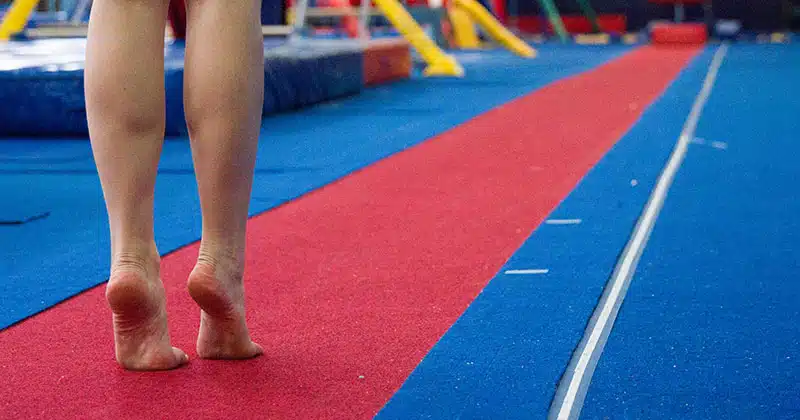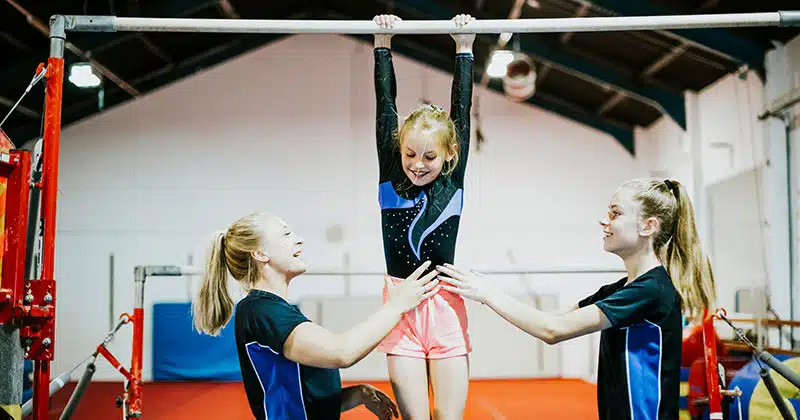Turning your passion for gymnastics into a thriving business is an exciting journey. But there’s one thing you need to have a handle on before your dreams become reality: your finances.
How much does a gymnastics gym cost, initially and over time? What kinds of things do you need to purchase? Are there any essential expenses you haven’t thought of yet?
This article answers these questions and more.
We’ll look at the importance of financial planning. Then, we’ll outline both startup and operational expenses, offer valuable financial management tips, and provide actionable steps to start planning your finances.
With these insights, you can make informed decisions, avoid common pitfalls, and set your gymnastics gym on the path to success.
First, you need to understand why you need a financial plan for your gym.
The Importance of Financial Planning for Your Gymnastics Gym
Understanding the money side of running a gymnastics gym is vital.
Why? Because operating any small business is tricky.
About 33% of small businesses don’t make it past two years. Half of them close before hitting five years, and only about 33% are still around after 10 years.
One of the most common causes of failure is cash flow. And that’s why making smart money choices from day one is key.
First, let’s talk about what it costs to open a gymnastics gym.
You’ve got startup costs. These are the costs you need to cover before you open your doors. You must account for buying or renting a space big enough for your gym, getting all the gymnastics equipment (think mats, beams, bars, and vaults), and ensuring your gym is safe and welcoming.
RELATED ARTICLE: How to Run a Successful Gymnastics Studio
Then there’s insurance to think about. Safety comes first, but you’ll want to be financially covered in case of accidents or unforeseeable events.
And don’t forget about marketing to let people know your new gym exists. This may sound like something you can skimp on, but it’s crucial to help you reach a profit point faster.
Once your doors are open, the spending isn’t over. Running a gym means ongoing costs. Account for things like payroll, monthly utilities, and equipment maintenance and replacement.
Plus, unexpected costs pop up, like repairs.
How do you prepare for all this? It’s all about budgeting and planning.
A good budget helps you see what you’re spending and earning. It’s like a map for your gym’s money.
When you understand where your money is going, you can make financially responsible choices, like cutting expenses or figuring out the best ways to bring in more gymnasts.
It’s not just about having enough cash to start. It’s about planning for the present and the future so your gym can reach its full potential.
FROM ONE OF OUR PARTNERS: How to Build a Business Budget: 6 Easy Steps

Breaking Down the Costs of Opening a Gymnastics Gym
Opening a gymnastics gym is exciting, but it also means breaking down your expected costs into trackable divisions. It will help account for your cash flow and allocate it as needed.
Let’s look at what the costs are and why they matter.
Startup Costs
When you start a gymnastics gym, you’ll need to make a few significant purchases. These include:
Facility Rental or Purchase
You need a place for your gym. Renting might cost less at first, but owning your space gives you more control over it. Think about what’s best for you.
Renting means not worrying about selling if you move, but owning means you can divide and tailor the space to fit your needs exactly.
Equipment Investment
Your gym needs equipment like spring floors, bars, beams, and other apparatuses. The type of equipment you purchase depends on what gymnastics activities you offer. High-quality equipment costs more initially, but it’s sturdier and lasts longer.
Staffing Expenses
You need great coaches to teach gymnastics. Advertising job openings and interviewing candidates can cost money. Don’t forget to factor in any office furniture and work-issued devices like tablets or computers.
Insurance
Gyms need insurance to protect against accidents or damage. General liability insurance covers injuries or property damage. Professional liability insurance covers claims if someone says your service was negligent or harmful.
Licensing Fees
Your gym might need licenses or permits to operate legally in your area. These costs vary depending on where you live.
Operational Expenses
After your gymnastics gym is open, you’ll have ongoing costs to keep it running smoothly. These include:
Utilities
Electricity, internet service, water, and possibly gas are monthly expenses to account for. The cost of utilities can fluctuate based on seasonal changes, the size of your gym, and its location.
Marketing and Advertising
To attract more students, you need to tell people about your gym. This might mean paying for ads online, creating an engaging and functional website, and using a social media business account.
Sometimes, old-school methods like handing out flyers or in-person networking are effective, too.
Spending money on marketing is necessary because it helps your ideal audience learn about your gym.
Maintenance and Repairs
Gym equipment gets heavy use and can wear out. You’ll need to fix or replace things like mats or bars occasionally. Budgeting monthly savings for those things up front can help diffuse the cost when it comes up in the future.
Keeping your gym equipment in good shape is key for safety and making a good impression.
Staff Wages
You’ll pay your coaches and other staff for their work. On average, a front desk receptionist makes $12 an hour, and a gymnastics instructor makes $16.08 an hour. Paying fair wages helps retain good staff who make your gym a great place. So, do a little market research on the going rate in your area before creating this portion of your budget.
Emergency Fund
Sometimes, unexpected things happen, like sudden plumbing problems or a roof leak. Having some money saved just in case can help you fix these problems without stressing too much.

Financial Management Tips for Opening a Gymnastics Gym
Managing money wisely is a basic necessity when opening a gymnastics gym. Here are five tips to help you keep your finances in order and make your gym successful—now and for years to come.
Create a Detailed Budget.
A budget is a plan for how you’ll spend money you’ve earned in a fiscally responsible way. It helps you avoid impulse purchasing and prepare for inevitable expenses.
Start by listing all your expected costs, like rent, equipment, and staff wages. Then, compare that to how much money you’ll make from gym memberships or classes.
A good budget helps you see if you’re spending too much or not making enough.
Use simple tools like spreadsheets to track your cash flow. Or invest in software that can automate some budgeting and forecasting tasks. Software can also give you access to detailed and up-to-date financial data.
Monitor Cash Flow.
Cash flow is about the money coming in and going out of your gym. Keep an eye on it by checking your bank account often and using software to help track and forecast your balance.
Make sure you’re making more than you’re spending. This keeps your gym profitable and thriving without money issues.
RELATED ARTICLE: Trends That Will Affect Your Gymnastics Studio Business in 2024
Look for Financial Assistance.
Sometimes, you might need extra revenue to start or grow your gym.
You can apply for loans or recruit investors, but be cautious. Choose lenders and investors who understand your business and offer fair terms.
A good financial advisor can guide you toward the right financial assistance choices for you and your gym.
Make a Contingency Plan.
Things don’t always go as planned. Maybe equipment breaks sooner, or fewer people sign up for classes than expected.
A contingency plan is like having a backup. It requires saving money for emergencies or cutting costs without compromising your gym’s quality.
This helps you deal with surprises without panicking or skimming from other areas of your budget.
Invest in Your Gym Wisely.
Spend money on things that make your gym better. Investments could be high-quality equipment that lasts longer or specialized training for your coaches.
Think about what would bring the most value to your gym. For example, new special equipment like trampolines or aerial acrobatics apparatus might attract more members. That’s a good investment.
Always ask, “Will this help my gym grow?” before spending money.
FROM ONE OF OUR PARTNERS: How to Strengthen Your Gym’s Brand
How to Start Planning for the Costs of Opening a Gymnastics Gym
Before you jump into opening a gymnastics gym, planning your finances is crucial. Here’s how you can start laying the groundwork for a solid financial plan:
Count Your Assets.
Before you begin figuring out your total budget, list any current assets you’ll put toward your gym. Your assets should include money you have saved, any loans you’ve taken out, and other funding sources.
Assets can also include anything you already own that can be used for your gym, like gymnastics equipment or office supplies. This helps you avoid buying things you don’t need right out of the gate.
Prioritize Your Purchases.
Divide your needs into ‘must-haves’ and ‘nice-to-haves.’
Must-haves like safety equipment and basic gymnastics gear are essential for opening day.
Nice-to-haves—such as advanced sound systems or high-end decor—can improve the gym but aren’t urgent. These can be purchased later as your budget allows.
Conduct Thorough Research.
Before making any purchase, research it to ensure you get the best deal. Look at different suppliers for equipment and compare prices.
Don’t just consider the cost, though. Think about quality and longevity, too. Sometimes, spending a bit more on durable equipment saves money in the long run.
Consider Second-Hand Options.
For some items, buying new isn’t always necessary. Check out second-hand or gently used equipment from reputable sources. This can be a great way to stretch your budget further, especially for big-ticket items like gymnastics apparatuses.
Negotiate With Vendors.
Don’t accept the first price you’re given. Many vendors expect some negotiation. They may offer better terms or discounts, especially if you’re buying multiple items or planning a long-term relationship.


